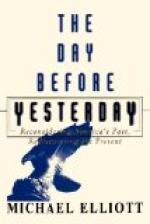I often drove with my mother, and when we had covered more ground than usual, upon arriving home, I always ran round to the leaders to inquire anxiously if my friend little Byrne “had a leg left to him, or if he had lost his life,” and was much relieved at finding him sitting on his horse in perfect health, with his normal complement of limbs encased in white leathers. I believe that I expected his legs to drop off on the road from sheer fatigue.
I knew, of course, that the Lord-Lieutenant had to confirm all death-sentences in Ireland. From much reading of Harrison Ainsworth, I insisted on calling the documents connected with this, “death-warrants.” I begged and implored my father to let me see a “death-warrant.” He told me that there was nothing to see, but I went on insisting, until one day he told me that I might see one of these gruesome documents. To avoid any misplaced sympathy with the condemned man, I may say that it was a peculiarly brutal murder. A man at Cork had kicked his wife to death, and had then battered her into a shapeless mass with the poker. I went into my father’s study on the tip-toe of expectation. I pictured the Private Secretary coming in slowly, probably draped for the occasion in a long black cloak, and holding a white handkerchief to his eyes. In his hand he would bear an immense sheet of paper surrounded by a three-inch black border. It would be headed death in large letters, with perhaps a skull-and-crossbones below it, and from it would depend three ominous black seals attached by black ribbons. The Secretary would naturally hesitate before presenting so awful a document to my father, who, in his turn, would exhibit a little natural emotion when receiving it. At that moment my mother, specially dressed in black for the occasion, would burst into the room, and falling on her knees, with streaming eyes and outstretched arms, she would plead passionately for the condemned man’s life. My father, at first obdurate, would gradually be melted




